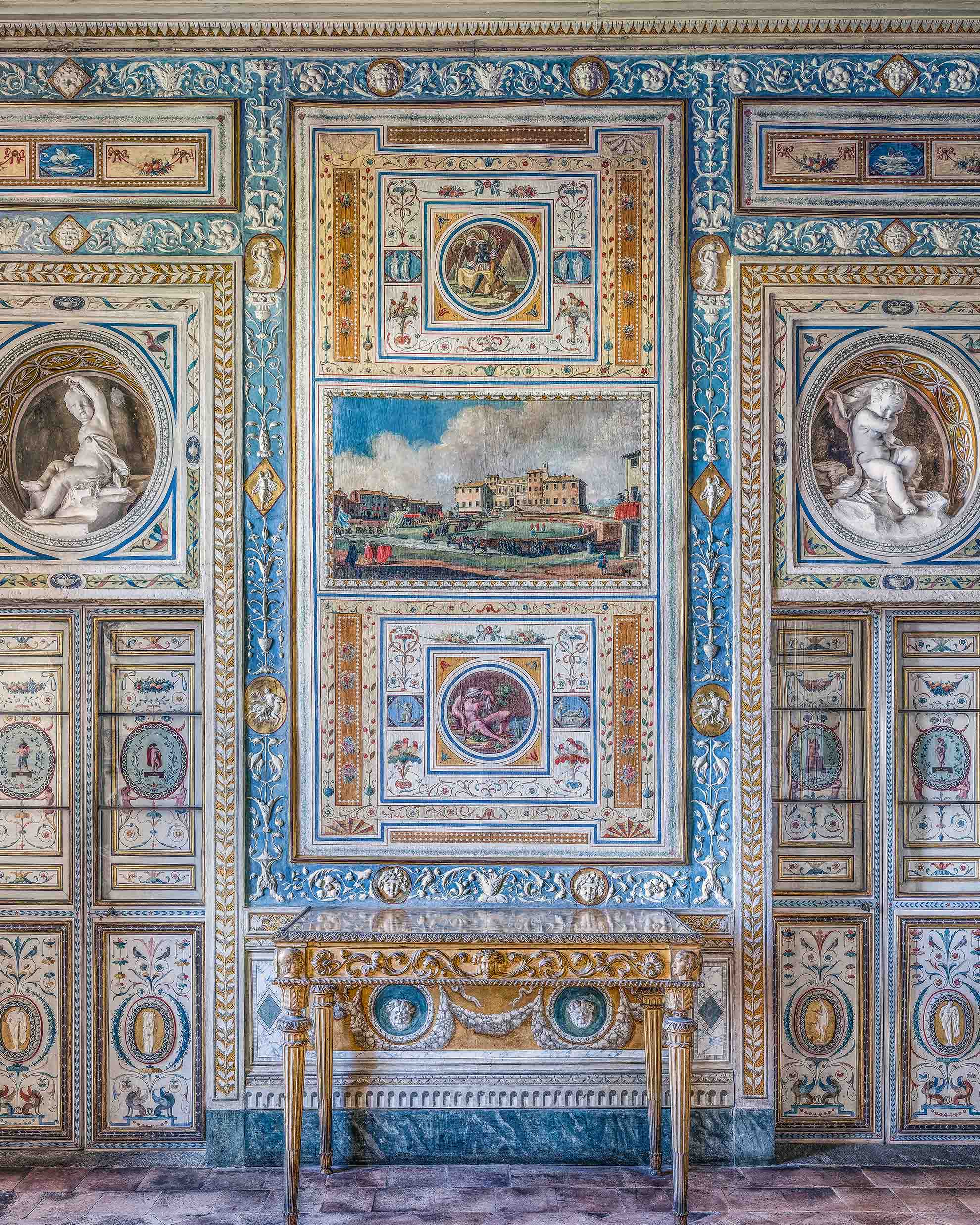
Notes from Underground
THE CHANGING TASTES OF THE ETERNAL CITY
Caterina NapoleoneHe stumbled and the floor opened up beneath him. Regaining his senses, he looked around and – like a character from The Arabian Nights – found himself in an underground chamber, its walls adorned with paintings unlike anything ever glimpsed in his world. That tumble into the Domus Aurea by a nameless citizen of fifteenth-century Rome was the starting point for the grotesque style. Before long, great artists would rappel down into that same subterranean grotto (hence the name grottesco), dangling in wicker baskets and holding torches up into the gloom. The flourishes, arabesques, small figures, and ornate frames of that buried alphabet of a forgotten visual language would soon proliferate on the walls of patrician villas. Grotesqueries became ubiquitous in Mannerist Rome until Rococo became all the rage and they morphed into singerie and chinoiserie: monkeys behaving like humans and figures from the Far East. Once the novelty wore off, artists of the later eighteenth century turned back to the original Roman style, influenced by cartloads of artifacts from Pompeii and Herculaneum. The tale is told in Oriolo Romano’s Palazzo Altieri by an important yet overlooked artist, Giuseppe Barberi.






